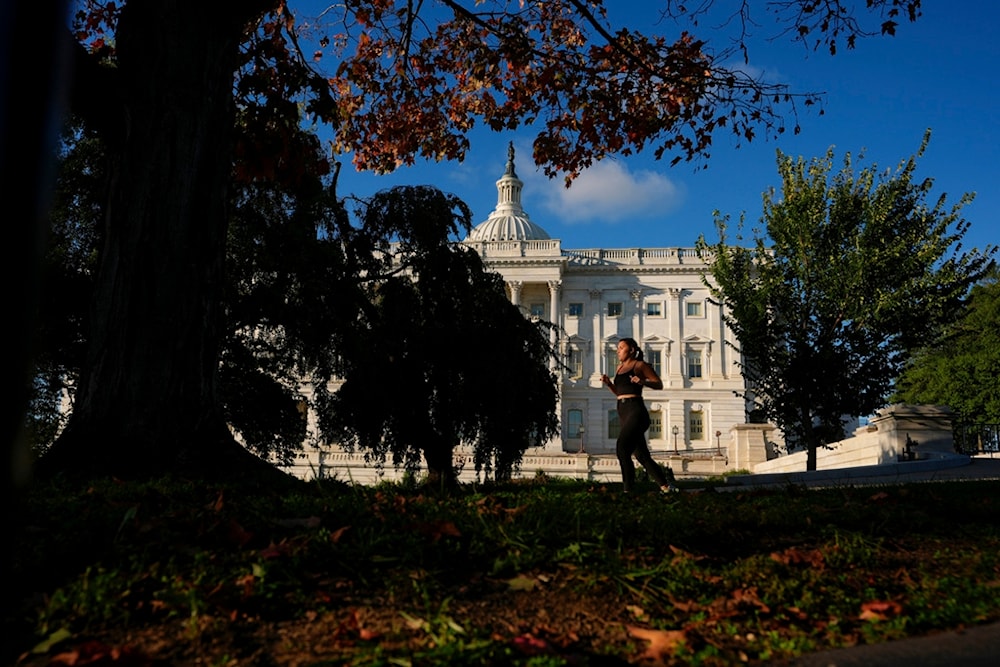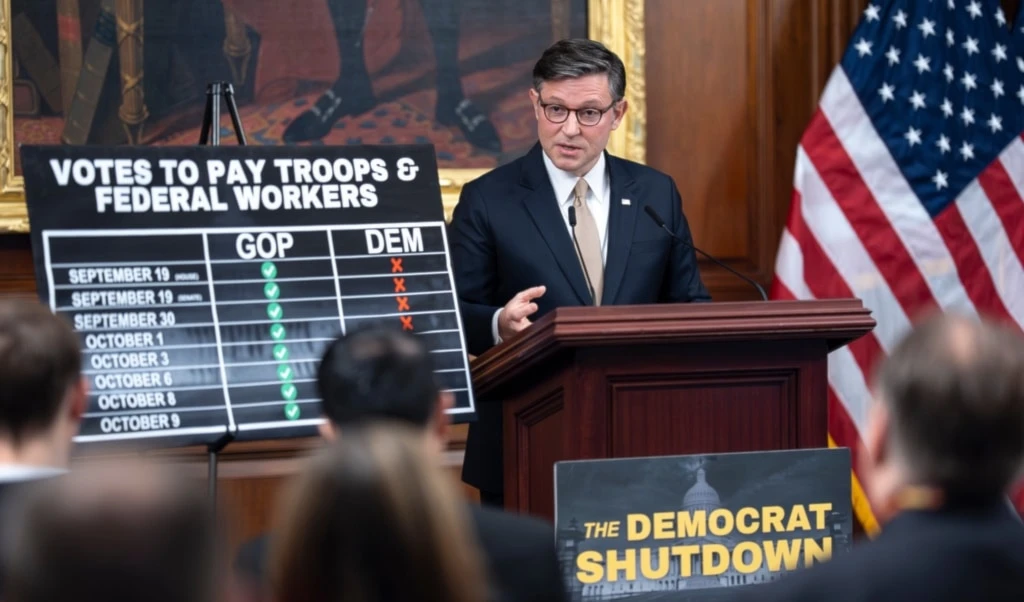US Senate fails for 8th time to end government shutdown
The US Senate's latest failure to pass a funding bill has deepened the partisan standoff over healthcare subsidies, pushing the federal government shutdown into its third week.
-

A person jogs past the US Capitol amid fall foliage, Tuesday, Oct. 14, 2025, in Washington. (AP)
The US Senate on Tuesday once again failed to pass a temporary funding measure to reopen the government, prolonging the partial shutdown now stretching into its 14th day.
The vote ended with 49 senators in favor and 45 opposed, well short of the 60 votes needed to move the bill forward. It was the eighth failed attempt to approve a stopgap resolution to keep government operations running.
The proposal, crafted by Republican lawmakers and already passed by the House of Representatives, would have extended funding through November 21.
Democrats rejected it unanimously, insisting that it does not secure the long-term financing required to sustain public health programs and the Affordable Care Act (ACA), both facing major reductions this fiscal year.
Republicans countered that government funding should not be tied to healthcare subsidies, repeating "unsubstantiated claims that such aid is exploited by undocumented immigrants." Six senators were absent, including Pennsylvania Democrat John Fetterman, one of the few Democrats who had previously broken ranks to back GOP funding efforts.
Healthcare clash at the center of the crisis
At the heart of the deadlock lies the dispute over ACA subsidies, federal payments that help millions of Americans afford health insurance. Democrats have warned that letting the subsidies lapse could double premiums for low- and middle-income families, while Republicans, led by House Speaker Mike Johnson, argue that the issue can be dealt with later. Johnson reiterated earlier this week that talks would only resume once Democrats "hit pause on their health care demands and reopen" the government.
As the impasse drags on, President Donald Trump has taken an increasingly aggressive stance, announcing that his administration will release on Friday "a list of federal programs [it] intends to permanently abolish." The move follows mass layoffs of federal workers, an unprecedented step that unions have condemned as politically motivated.
Vice President JD Vance defended the decision, calling the cuts "painful but necessary," while labor organizations have filed lawsuits accusing the administration of violating worker protections.
Nationwide disruptions mount
The impact of the shutdown is spreading across key sectors. The Education Department has halted special education and after-school programs, the Transportation Department is short-staffed, causing flight delays and safety inspection backlogs, and the CDC has scaled back disease surveillance and vaccine outreach. National parks, museums, and the National Zoo have closed to the public, with only essential staff maintaining basic operations.
According to the Congressional Budget Office, only departments with mandatory funding, such as Defense, Treasury, and Homeland Security, can sustain limited activity, leaving most civilian workers unpaid. Roughly 4,100 federal employees have already lost their jobs, including staff at the Department of Justice and the CDC, underscoring the mounting institutional toll.
Longest shutdown looms
White House officials and Senate Republican leaders have warned that, without progress, "this could turn into the longest shutdown in US history." Economists estimate the closure is already costing billions in lost productivity and delayed contracts. With open enrollment for ACA coverage set to begin on November 1, the stakes continue to rise as Washington’s political gridlock shows no sign of easing.
In the absence of bipartisan cooperation, the US faces an escalating political and economic crisis, one that now threatens to surpass the record 35-day shutdown of 2019 and redefine the limits of partisan brinkmanship in American governance.
Read more: NASA Jet Propulsion Lab to lay off hundreds

 4 Min Read
4 Min Read









